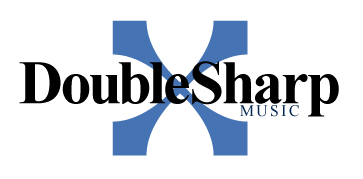The Different EQ bands and What they mean
- Timothy Wheeler
- Dec 4, 2020
- 3 min read
Throughout my blog series on EQs I am going to refer to the free EQ plugin that comes with Pro Tools, the Digirack EQ III 7-band. First, let’s talk about the input/output LED meters and gain controls (top left of the plugin). This simply shows the input and output signal level running through the EQ. Always check to make sure there is no clipping going on. If on the input or output side the signal is clipping, hitting red, simply turn the respective gain knob down until there is no longer any clipping happening. It is normal to adjust these gain knobs. With the input gain knob is a symbol, Ø. This is the polarity switch “button.” This will invert the phase of the incoming signal. If you don’t know what this is, I will cover it in a later post. It’s a little more advanced, but easy to understand and know when to use. For now, it won’t concern us.
Just beneath the input/output section are two filters. There is a high pass filter and low pass filter (HPF, LPF).

High Pass Filter

Low Pass Filter
There is also a notch filter. It looks like a line with a ‘V’ in the middle of it. (I couldn’t find a pic of one.)
-∨- (notch filter)
The high pass filter alllows high frequencies to pass through the EQ, while cutting low frequencies, not allowing them to go through the EQ. Conversely, the low pass filter allows low frequencies to pass through and cuts high frequencies. The notch filter takes a small section of audio and makes a deep cut (-12 dB or more). It takes a “notch” out of a small section of audio frequencies. The frequency can be set by the user. One use for the notch filter is for plosives on a vocal track. When a vocalist pops, say a ‘p,’ set the notch filter at 100 Hz. It should diminish it greatly or make it go away completely. You may have to sweep the EQ up or down a little to take care of it.
The two filters each have an “IN” button to engage them. They will light up blue when engaged. The frequency, of course, can be set to whatever you want.
Lastly, there is a setting that is used for the HPF/LPFs that tells the filter how steep of a cutoff you want. If we are allowing high frequencies to pass through and cut out low frequencies, how strong do we want to cut off those low frequencies? The slope is set per octave. The setting choices are 6 dB per octave, 12 dB/oct, 18 dB/oct, and 24 dB/oct. As an example, let’s say I set a high pass filter at 200 Hz, with a 12 dB/octave slope. What this means is that only frequencies above 200 Hz will pass through the EQ (and anything further in the signal chain), and frequencies one octave down (100 Hz, remember from my previous post?), will be 12 dB quieter. Another octave down, 50 Hz it will be another 12 dB quieter. There are times we want a steep cutoff, like 24 dB/octave and other times when we might want 6 dB/octave.
Look on the left side of the GUI window, which shows the graphic interface. There are small numbers. On the center line is 0. This is where all EQ bands start. In out example, since we’re cutting at 200 Hz, at 100 Hz the downward slope will be at -12 dB. At 50 Hz it will be -24 dB.
I hope this hasn’t been too confusing. Try experimenting with these filters on a mix you’re working on. Keep your ears open when doing this. You can even experiment on a piano or acoustic guitar track. Set the HPF up higher, like 400, 500 Hz. Change the different octave settings. You should hear what’s happening.




Comments